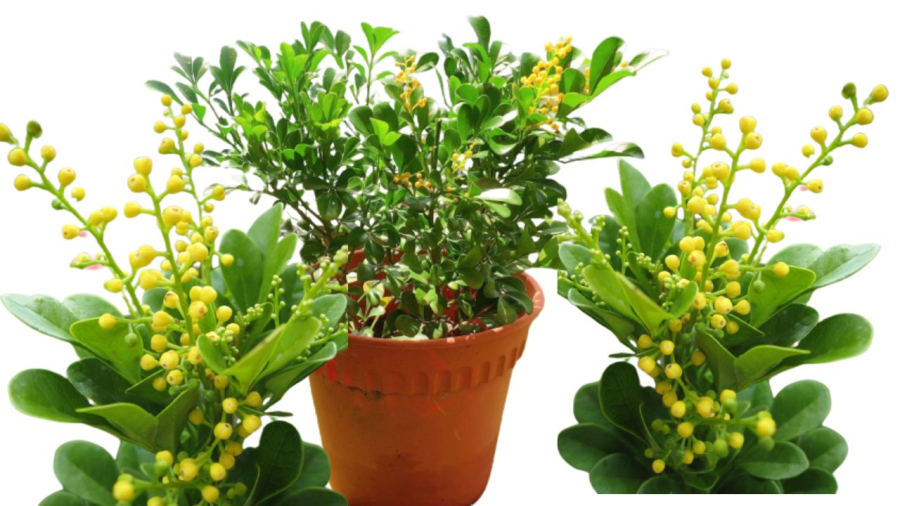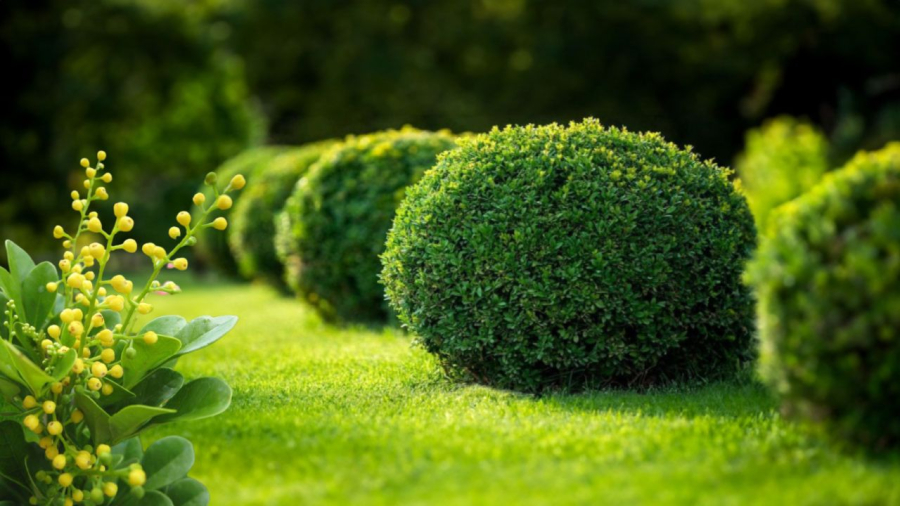What is the Significance of Planting the Crape Jasmine?
Crape jasmine, with its distinctive round or hexagonal shape, is often planted in front of houses. In traditional culture, the crape jasmine represents the shy, modest, and graceful beauty of a woman. The plant is primarily admired for its lush green foliage and tiny, delicate flowers, which are best appreciated up close.
The crape jasmine is known for its light and pure fragrance. After a heavy downpour, the flowers bloom in abundance. Planting this tree is considered auspicious from a feng shui perspective. The evergreen leaves, growing upwards, symbolize abundance and prosperity.
In ancient times, crape jasmine was also planted for its medicinal properties. In traditional Chinese medicine, it is considered a valuable herb. The flowers have a sweet and pungent taste and are effective in relieving drunkenness, clearing stagnation, cleansing the lungs, promoting mental relaxation and clarity, improving eyesight, and quenching thirst. It is used to treat coughing, chest congestion, abscesses, jaundice, asthma, menstrual irregularities, and high blood pressure, among other ailments. The leaves and roots are also used as a tonic, antiseptic, anti-inflammatory, and pain reliever for joint pain and scabies.

Crape Jasmine’s Refreshing Green Leaves
Feng Shui Placement of the Crape Jasmine
Crape jasmine trees are typically planted in front of houses. They are resilient, thriving in sunny locations with moist soil, and can adapt to harsh climatic conditions. In feng shui, planting a crape jasmine in front of your home is believed to create a water-repelling barrier, protecting the entire house. It helps ward off negative energies and evil spirits while attracting positive energy and good fortune, balancing the family’s life forces.
The presence of a crape jasmine tree promotes harmony among family members and symbolizes a large and prosperous offspring, bringing wealth and tranquility to the household.

Crape Jasmine, a Common Sight in Front of Homes
Given its feng shui significance, medicinal uses, and easy growth, the crape jasmine is an ideal plant for homes, adding aesthetic and spiritual value. It is also commonly planted in temples and public spaces. Additionally, the crape jasmine holds a special place in the traditional art of tea appreciation, making it a perfect addition to the homes of tea enthusiasts.
Planting and Caring for the Crape Jasmine
The crape jasmine is relatively low-maintenance. Simply purchase a sapling and transplant it into a pot or your garden. Ensure the soil is loose, nutrient-rich, and well-drained. Place the plant in a sunny spot, ensuring it receives adequate sunlight, and avoid overshadowing it with larger plants. While it thrives in sunlight, the crape jasmine can also tolerate partial shade, making it suitable for indoor placement with occasional exposure to sunlight.
Remember to prune your crape jasmine regularly to maintain its beautiful shape and ensure its positive feng shui influence.
This information is for reference only.
The Lucky Money Tree: Unlocking Abundant Wealth with the Power of Feng Shui
The Money Tree, or Pachira Aquatica, is an auspicious plant with a unique presence. Its vibrant energy and lush foliage have long been associated with prosperity and good fortune in Asian cultures. This guide will delve into the art of placing the Money Tree in your home, aligning with the ancient principles of Feng Shui to invite abundance and positive energy into your living space.
The 4 Common Vastu Shastra Mistakes in Your Living Room That Could Bring Bad Luck and Ruin Your Life
The living room is a pivotal space in the home, and its feng shui has a profound impact on the family’s wealth and prosperity. Leading experts in the field of feng shui have identified four common items that, if placed in this room, can disrupt the positive energy flow and require careful consideration.
Should You Plant a Jackfruit Tree in Front of Your House?
The allure of the luscious jackfruit with its exquisite blooms and sweet, fragrant bulbs has captivated many. The desire to plant this wondrous tree in one’s front yard is understandable. But what does the practice of Feng Shui dictate? Is it auspicious to have a jackfruit tree gracing your home’s entrance?






































